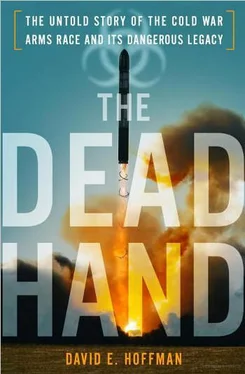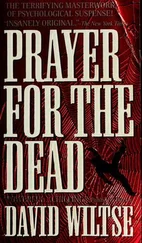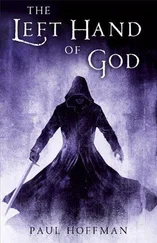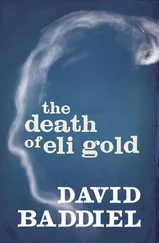“805, open fire on the target,” ground control instructed Osipovich. But at that moment, Osipovich said he couldn’t because he had almost overtaken the airliner. “Well, it should have been earlier, where do I go now, I am already abeam of the target?” This statement that he was “abeam,” or alongside the airliner, suggested, to some, in retrospect, that Osipovich should have seen the 747’s distinctive hump. But investigators said radar tracks show that Osipovich was consistently behind the 747, and to the right. Osipovich also recalled later that his own plane “began to rock” at this point; he did not say why. 4
In the next radio transmission, Osipovich said, “Now, I have fallen back from the target.” He added the airliner was at 33,000 feet and on his left. He does not indicate his own altitude—above or below the 747. If he was below the 747, it would have been harder to see the plane’s hump.
At 3:24, Osipovich’s radio crackled with orders: “805, approach target and destroy target!” The airliner was just slipping away from the Sakhalin coast. Osipovich recalled later it was at this point he had finally gotten a look at the plane, and he realized suddenly it was larger than an RC-135.
“Soon I could see it with my own eyes,” he recalled. “It was a big plane, and I thought it was a military-cargo plane because it had a flickering flash-light. There were no passenger plane routes, and there had been no occasions of any passenger planes losing their way…I could see it was a large plane. It wasn’t a fighter plane, but either a reconnaissance plane or a cargo plane.” 5
He fired. At 3:25, two R98 air-to-air missiles streaked ahead, one a heat-seeker that locked onto a source of infrared radiation such as the engine exhaust, the other guided by a radar. They each carried forty-four pounds of high explosive designed to produce fourteen hundred steel fragments. The heat-seeking missile was fired first and took thirty seconds to reach the airliner. Osipovich saw an explosion.
“The target is destroyed,” he reported.
He broke away to the right. He was low on fuel, and landed back on the island.
The explosion tore a hole in the plane five feet wide and the cabin pressure plunged. “What’s happened?” asked a surprised cockpit crew member at the blast. The missile had sliced through the control cables and the Boeing pitched up, pressing people into their seats. The engines remained on, but the speed brakes—the flaps that usually try to stop the plane on the runway—extended from the wing, the landing gear came down and passengers were told to put out cigarettes and prepare for an emergency descent. “Put the mask over your nose and mouth and adjust the headband,” the passengers were told on the public address system. The first officer radioed to Tokyo, barely able to speak through his mask. “Rapid compressions descend to one zero thousand.”
At 33,850 feet, the plane leveled off and rolled, falling toward the sea at five thousand feet per minute. All were lost.
Reagan was awakened in the middle of the night at Rancho del Cielo by a phone call from Clark about the missing plane. Nancy Reagan recalled her husband’s first reaction was, “My God, have they gone mad?” and “What the hell are they thinking of?” 6
Like punch-drunk fighters, the United States and Soviet Union began swinging wildly at each other in a melee of anger, indignation and error.
An ultra-secret Japanese-U.S. listening post had monitored some of the radio transmissions from Osipovich to his ground controller. A portion of these intercepts were sent to Washington, translated and transcribed. The initial transcript showed Osipovich was guided to the intruder and included his declaration “the target is destroyed.” In Washington, these words seemed to shout from the page. They showed the Soviets were guilty of wanton murder. But the transcript was only a piece of raw intelligence, far from the whole story. It did not reflect the intense confusion among the Soviet ground controllers, nor the presence of the RC-135. All through the event, the Soviet military had never made a careful effort at identification, inflamed as they were by their fears of another flyover like the one in April. This climate of chaos and misjudgment on the ground was not reflected in the printed transcript of the radio intercept. The catastrophe was a window into the weaknesses of the Soviet military system, an example of how imprecise judgments and poor equipment could go terribly awry, but that was not what Reagan and his men saw in the transcript.
In Washington, according to Seymour Hersh, a small group of analysts with air force intelligence realized within hours that the Soviets did not deliberately shoot down the airliner. These analysts prepared a secret presentation, using color slides, showing how the Cobra Ball mission may have led to the confusion. But in the heat of the moment, the presentation got little attention. The presentation made it to the White House twenty-three hours later, and even then made no impact amid the emotions of the day. As Hersh put it, the presentation “crash-landed.” 7
Shultz seized on the transcript of Osipovich to make a point. He wanted to go public with it. Shultz recalled in his memoir that, after an intense debate, he persuaded the CIA to let him use the transcript, even though it had come from ultra-secret intelligence gathering in Japan. For reasons that are unknown, Shultz did not wait until more complete information or transcripts could be examined. He apparently did not see the air force presentation.
On September 1, at 10:45 A.M., Shultz appeared before reporters at the State Department. In remarks delivered in a cold fury, he declared, “The United States reacts with revulsion to this attack. Loss of life appears to be heavy. We can see no excuse whatsoever for this appalling act.” Shultz claimed the Soviets had tracked the airliner for two and a half hours, when in fact they had difficulty following it and lost track. He claimed unambiguously that the pilot was in position “with a visual contact with the aircraft, so that with the eye you could inspect the aircraft and see what it was you were looking at.” With the press conference, Shultz launched what became a major U.S. rhetorical offensive against the Soviets, accusing them of deliberately killing the people on the airliner.
Reagan cut short his vacation and returned to Washington. He invited congressional leaders to the White House on Sunday for what became a dramatic, closed-door meeting. Reagan played an eight-minute tape, a fragment of the intercept in which Osipovich said “the target is destroyed.” Senator Strom Thurmond, the South Carolina Republican, said Reagan should seek revenge by expelling 269 KGB agents from the United States.
The briefing also led to the first public acknowledgment of the presence of the RC-135. The House Majority leader, Jim Wright, D-Texas, told reporters after the briefing that he heard the spy plane mentioned on the tape. White House officials rushed to say Wright was wrong, but they acknowledged, in the process of the denials, that there had been an RC-135 in the skies the day of the shoot down, which made for front-page stories the next day in the Washington Post and the New York Times . On Monday morning, September 5, Shultz asked for a full intelligence briefing about the spy plane, which he got at 8 A.M. Later that day, the State Department sent a four-page background paper to all American embassies that claimed the RC-135 could not have caused the shoot down. “The Soviets traced the Korean aircraft and the U.S. aircraft separately and knew there were two aircraft in the area, so we do not believe this was a case of mistaken identity,” the background paper said. It was wrong, like so much else said about the incident. 8
Читать дальше












